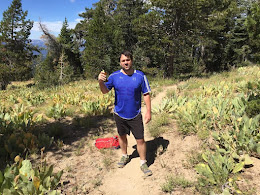...I would be waiting until after the election to do any work. The market in California is extremely uncertain right now. Your investment's value might suddenly plummet if the black market turns white overnight. That apparently hadn't occurred to whoever had planted on the Santa Ysabel Reservation. $100,000,000 worth. Really. At what point can pot be considered an invasive? That might be the best thing if Prop 19 passes! (Actually, best will be decreased illicit traffic on backcountry trails near the border.)
Now if I were a pot farmer in northern California, I would be preparing to establish a formal appellation - you know, like Napa or Sonoma. If you bottle wine and call it a Napa wine when it's really not, they can sue you. Similarly, Humboldt and Mendocino have to think about protecting their brand. That's one way that they're already anticipating the economic shock.
I'm curious as to whether people will still experience paranoia from marijuana use once it's legal. Because so what if everyone knows you're high?
A Hard Lesson from Tragedy on Half Dome
6 hours ago



